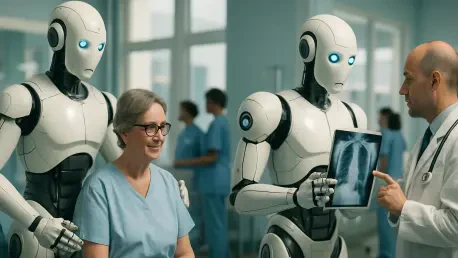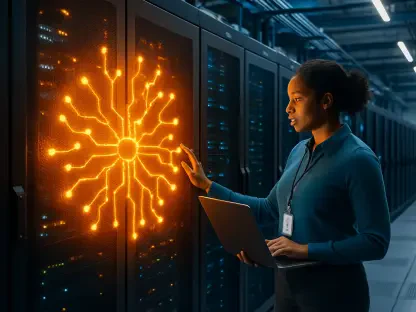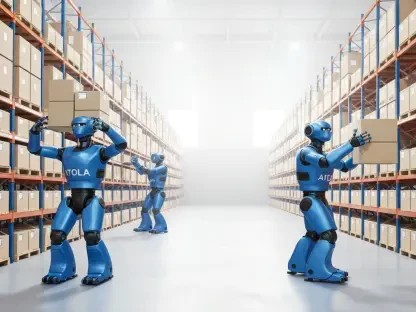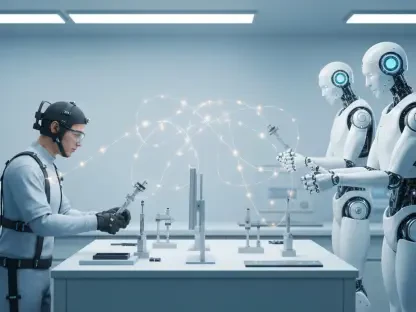Oscar Vail is a leader in robotics and medical technology, known for his contributions to fields like quantum computing and open-source projects. Today, we’re exploring the intriguing world of humanoid robots in healthcare, a solution proposed to address pressing issues like surgery delays and staffing shortages.
Can you explain the current challenges faced by hospitals regarding surgery delays and staff shortages?
The healthcare industry is under immense pressure right now. As waiting rooms become overcrowded, doctors face burnout, and surgeries encounter lengthy delays, often leading to cancellations. These challenges stem from a critical shortage of skilled healthcare professionals, which in turn affects patient care and overall efficiency within hospitals.
What role do humanoid robots play in addressing these challenges?
Humanoid robots can be pivotal in alleviating these issues by performing tasks that don’t necessarily require human intervention yet are vital in a medical setting. They can assist with repetitive or physically taxing duties, reduce burdens on healthcare workers, and ultimately speed up processes within hospitals, helping manage workloads more effectively.
How do humanoid robots in the operating room differ from the surgical robots used today?
Current surgical robots are highly specialized and costly, requiring very skilled operators to function. Humanoid robots, on the other hand, could integrate more seamlessly with human workflows, mimicking the dexterity and versatility that human workers possess, performing multiple roles without commanding the same level of specialization.
What are the limitations of current surgical robots in dealing with surgery delays and staff shortages?
Today’s surgical robots are limited by cost and specificity. They’re not truly autonomous and need trained operators to assist them, which doesn’t alleviate the burden significantly. Additionally, they don’t address delays caused by operational inefficiencies or staffing gaps in non-surgical duties, overloading the existing workforce further.
How might humanoid robots help streamline operations in waiting rooms and surgical scheduling?
Humanoid robots could help streamline administrative tasks like patient check-in and scheduling. They might also assist in pre-operative preparations and post-operative care, reducing bottlenecks and delays by taking on tasks that are typically time-consuming for human staff, allowing them to focus on more diagnostic or critical interventions.
Can you elaborate on how improvements in AI have not yet translated to surgical robots?
Surgical robots haven’t fully benefited from advancements in AI due to the complexity and specificity of surgical tasks. The required data volume and precision for AI in surgery make it challenging. Thus, although AI excels in general learning, its application in surgical contexts demands more intricate and tailored datasets.
What kind of data is required to train surgical robots, and what makes it labor-intensive and cost-prohibitive?
Training surgical robots necessitates vast amounts of highly detailed and specific medical data, reflecting the nuances and variability of human anatomy and surgical procedures. This data collection and processing require considerable time and effort, becoming expensive and challenging, especially concerning patient privacy and ethical issues.
How can training data from industrial robots be repurposed for medical procedures?
Industrial robots already use advanced AI models for task execution. By adapting these models to medical environments, the foundational learning can be redirected to facilitate simpler medical tasks. This transition requires mapping industrial tasks onto medical processes, potentially kickstarting more complex medical applications later.
What advantages would multi-fingered hands and general-purpose humanoid robots offer in surgical environments?
Multi-fingered hands enhance precision and versatility, essential in a surgical setting. These robots can perform tasks currently reserved for humans, like handling instruments or maintaining sterile fields. Their general-purpose nature means they can easily switch roles as needed, becoming invaluable surgical aides.
Can you provide examples of tasks that humanoid robots could assist with in the operating room?
Humanoid robots could hold ultrasound probes, manage endoscopic cameras, or act as scrub nurses, handing instruments during procedures. They can also undertake low-risk, repetitive tasks that require reliability and precision, freeing human staff for more critical, hands-on care.
Why is it more beneficial to have general-purpose humanoid robots than special-purpose robots for each task?
General-purpose humanoid robots offer flexibility and are cost-effective over time. They can be reprogrammed or adjusted for various tasks, unlike specialized models, which require significant investment for each role. This adaptability lets hospitals optimize resources without redundant technology.
How might the increase in AI foundation models in industry influence humanoid robots in hospitals?
The growth in AI foundation models means humanoid robots can learn and adapt more rapidly, gaining diverse capabilities and assisting with complex healthcare tasks. As these models advance, robots will increasingly emulate human skills and decision-making, becoming integral in hospital operations.
Could you give us an overview of your upcoming paper on humanoid robots in hospitals?
The paper explores how humanoid robots might transform hospital operations, emphasizing their potential for surgery-related tasks and addressing labor shortages. It provides technical insights into their design and deployment, focusing on enhancing workflow efficiency and minimizing patient backlogs.
What long-term impact do you foresee humanoid robots having on healthcare labor shortages worldwide?
In the long term, humanoid robots offer a scalable solution to labor shortages, potentially alleviating workforce strain in hospitals globally. By assuming non-critical tasks, they can allow medical staff to concentrate on direct patient care, improving job satisfaction and health outcomes.
What are some potential ethical or privacy concerns regarding the use of data in training humanoid medical robots?
Using medical data for training raises concerns about patients’ rights to privacy and consent, potentially exposing sensitive information. Ensuring ethical standards in data use involves rigorous regulations and transparent practices to safeguard personal health data from misuse.
When do you think these humanoid robots will become widely implemented in hospitals and surgical settings?
While technology and interest are rapidly advancing, widespread deployment depends on overcoming regulatory, ethical, and technical challenges — possibly within the next decade. Hospitals need to build infrastructure and trust in these systems, which involves ongoing research and acceptance by medical professionals.









